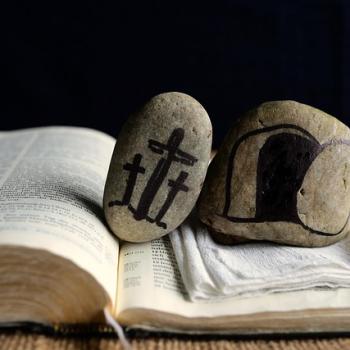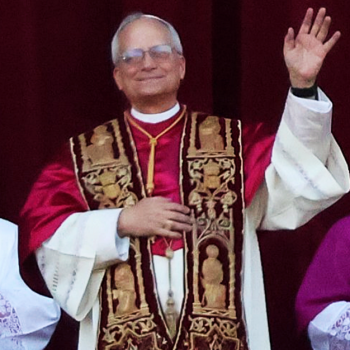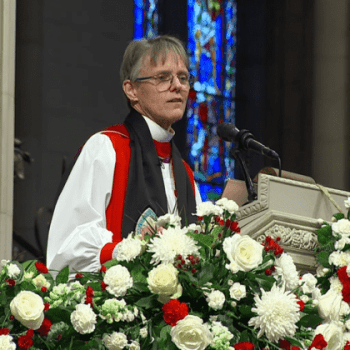On February 1, 1960, four black students sat down at a segregated lunch counter in Greensboro, North Carolina, refusing to leave until they were served. Within a few weeks, their protest had spread, sparking a nonviolent campaign that would eventually do away with Jim Crow segregation in the South. A wise mentor to the student-leaders of that movement, Ms. Ella Baker, insisted their sit-ins were about "more than a hamburger." They weren't just asking to be served, Baker said. They were "seeking to rid America of the scourge of racial segregation and discrimination — not only at the lunch counters but in every aspect of life."
Since the shooting death of Michael Brown in Ferguson, Missouri, young people throughout America have marched, protested, organized, and engaged in civil disobedience to insist that "Black Lives Matter." They have taken direct action to insist upon equal justice for the young black men who die at the hands of law enforcement officers. After months of national news stories, the first white officer has been indicted and jailed for the murder of Walter Scott in North Charleston.
While some are heralding this as progress, Ms. Baker's legacy compels us to say: America needs more than an indictment. The moral movement against racial profiling and police brutality that has ignited such passion among America's young people does not simply seek to indict and convict a few bad apples. It aims to unveil what historian Carol Anderson has called the "white rage" behind these shootings.
Though many police departments have been reticent to report their data, a great deal has been collected, verified, and presented at MappingPoliceViolence.org. Since last September, when national media started paying attention to this issue, the average number of black men killed by police each month has steadily increased. March 2015 alone saw a 71 percent increase over the previous month. Half of black victims were unarmed.
If protests against police violence and increased national awareness have only led to more black deaths at the hands of white officers, then a single indictment is not enough. Something more is going on here. Walter Scott was running away. Twelve-year-old Tamir Rice was shot within two seconds of the officers' arrival on the scene. Eric Garner was choked to death with an illegal hold while crying, "I can't breath." Jonathan Ferrell, an unarmed man in Charlotte, NC, was shot while asking for help after his car broke down. Yet in case after case, white officers report feeling "threatened." What are they afraid of? And what imagined enemy are they taking aim at when they shoot to kill?
As heirs of the Southern Freedom Movement, we know well the pattern of white-on-black violence that always increases when white male political power is threatened by fusion organizing. Following the Civil War in our home state of North Carolina, freed blacks and white Republicans recognized their common interests and formed a Fusion Party, which took control of both houses of the legislature and the governor's office in 1898. "Red Shirts," who were financed by the moneyed elites of the Democratic Party at the time, dressed as law enforcement officers and led the only successful coup d'état in American history, focusing their attack on black men. The Red Shirts were never indicted for the arson, destruction of property, and murder they committed. But their shots were aimed at more than individual black victims. Their white rage effectively locked North Carolina into six decades of Jim Crow segregation.
When a fusion coalition of civil rights workers, people of faith, and black folks again came together in the mid-20th century, the threat to established political power in the South was again met by white rage. After joining a local chapter of the NAACP in Amite, Mississippi, Herbert Lee was threatened and harassed by local law enforcement in the 1950s. When Lee began working with Bob Moses to register voters in 1961, E.H. Hurst, a local member of the Mississippi state legislature, followed Lee in a truck owned by the local sheriff and shot him dead. Though the Ku Klux Klan is often remembered as the agent of terror in the 1960s, it regularly operated in cooperation with local law enforcement throughout the South.
Since 2007 we have witnessed the rise of "Moral Mondays" and a new justice movement in the South, rooted once again in fusion organizing that challenges established power brokers. Since our fusion coalition sent a black man to the White House in 2008, white rage has erupted again, fomenting a culture of fear that asks white Southerners to be afraid of their black and brown neighbors. In the 2010 midterm elections in North Carolina, Tea Party extremists mailed a photo of a black man on North Carolina's death row to thousands of homes, suggesting that this "dangerous" man could soon move in next door. Political strategists continue to use these fear tactics because they work. But if these fears are in the background each time a white officer shoots a black man, then addressing white rage is about more than an indictment.




